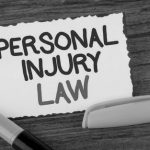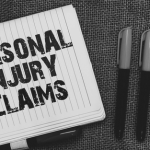If you have been injured on someone’s property, you may be able to sue the owner of the property under North Dakota law. These types of lawsuits fall under “premises liability” law. Under North Dakota premises liability law, landowners owe a general duty to lawful entrants (individuals who are not trespassers) to maintain their property in a reasonably safe condition in view of all the circumstances, including the likelihood of injury to another, the seriousness of the injury, and the burden of avoiding the risk. If a landowner allows dangerous conditions to exist on the premises, the landowner must take reasonable measures to prevent injury to those whose presence on the property reasonably can be foreseen.
Control
Now, premises liability law can be complicated because there may be some exceptions and/or requirements that apply. The most essential requirement in premises liability cases is control. Under North Dakota law, the landowner must have control over the property where the injury occurred in order to find the landowner owed a duty of care to an injured party. Multiple parties can have control of an area in certain situations as well, depending on the facts of each case.
“Open and Obvious”
One common exception in premises liability law involves cases where the dangerous condition is “open and obvious”. In certain factual situations, this exception limits the landowner’s duty to protect lawful entrants on their property or warn of dangerous conditions on the property when the dangerous condition is known or obvious to the entrant. While a landowner may be relieved of his or her liability if the physical harm was caused by a dangerous condition that was open and obvious, the relief is not absolute. When a landowner has reason to anticipate that a lawful entrant will proceed to encounter a condition despite its open and obvious nature, the landowner is not relieved of the duty of reasonable care, which he or she owes to the lawful entrant. This duty may require him or her to warn the entrant, or to take other reasonable steps to protect the entrant, against the known or obvious condition or activity, if the landowner has reason to expect that the entrant will nevertheless suffer physical harm.
You may be wondering, how can a landowner anticipate harm to a lawful entrant when known or obvious dangers arise? Well, the North Dakota Supreme Court has discussed situations where this could occur. For example, where the possessor has reason to expect that the lawful entrant’s attention may be distracted so that he or she will not discover what is obvious or will forget what he or she has discovered, or fail to protect against the danger. Another example is when the landowner has reason to expect that the lawful entrant will proceed to encounter the known or obvious danger because to a reasonable person in his or her position the advantages of doing so would outweigh the apparent risk.
Snow And Ice Accumulations
Many jurisdictions outside of North Dakota relieve landowners from liability for natural accumulations of snow and ice because it is an open and obvious danger. However, the North Dakota Supreme Court declined to follow this rule because the natural accumulation rule would undermine the principles of public responsibility. The Court said that “the reasonableness standard” is the proper rule. So, if you slip and fall on a property where snow and ice have accumulated, you may be able to sue the landowner under North Dakota law.
Conclusion
If you have been injured and are looking to consult with an attorney, please give the Personal Injury Team a call at 701-297-2890 or send us an email through the contact form below. All consultations are free of charge, and any case for personal injury is on a contingency fee basis only, meaning we only recover fees if we are able to get you compensation for your harms and losses.
The information contained in this article and on this website is for informational purposes only and not for the purpose of providing legal advice. Each personal injury case is different, and this article only summarizes very technical laws. You should contact an attorney to obtain advice with respect to your particular case.










